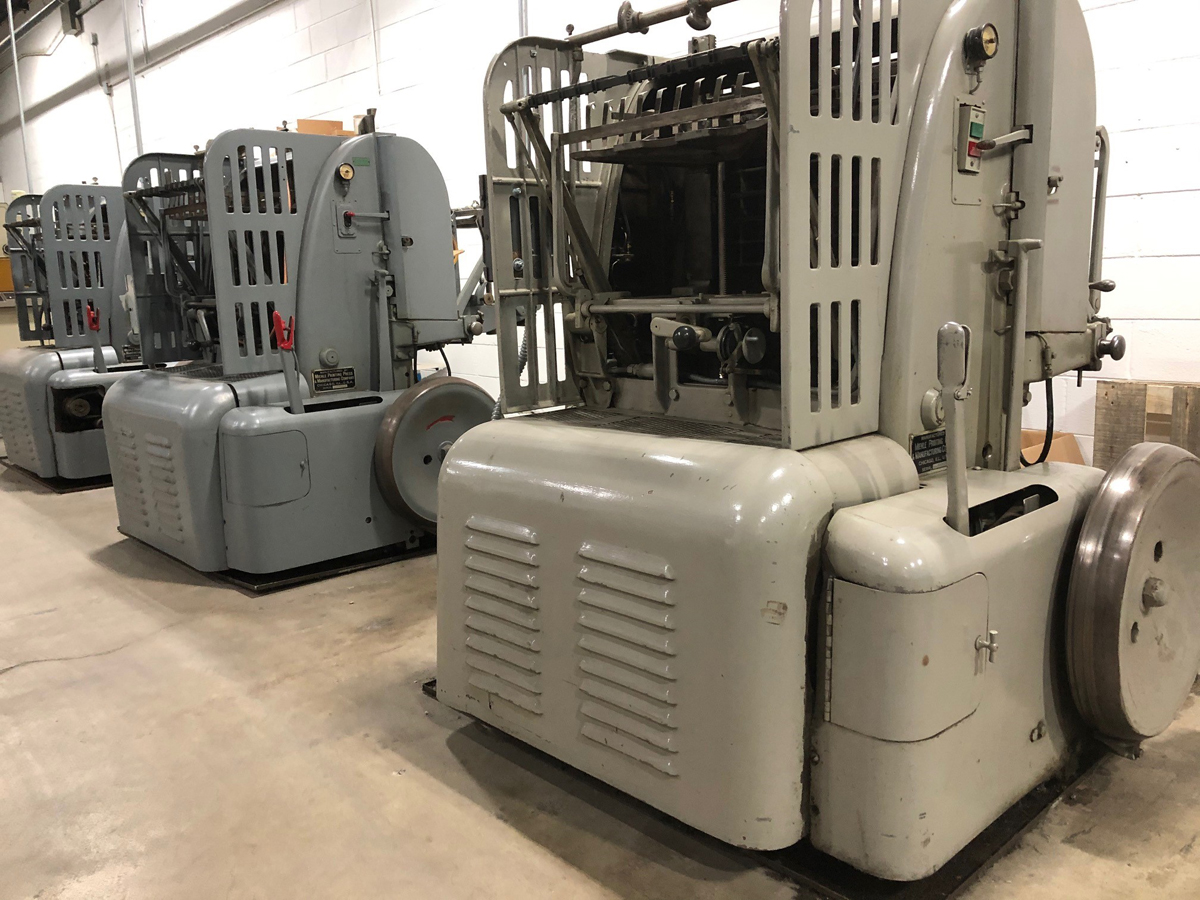I’ve had a passion for printing since 6th grade, when I learned to run an AB Dick 350 as part of my vocational schooling at Churchville Junior High. Then I had four years of production printing at York High School in Elmhurst, Illinois. From this time I was hooked. Not only did we print for the district but we also took in outside jobs as a full-service print shop. I even worked all summer long. I have been working in the printing and paper business in one way or another ever since.
It’s not just a job. When I’m not here at Guys E. Paper helping our printer customers with their needs, I collect and restore old printing presses. I have a dozen or so in my basement, and a few more at the office, including:
- AB Dick 310, 320, 326, 350, 360, 360PRO, 375, 9870, 98900, 9920
- Ryobi 2800, 3200, 3302
- Itek 985, 3985 Multi 85, 1250
- Davidson 500
- Hamada 700CD
- Miehle V36, V50
- Kluge 10X15 LOL
- And some others (29 in total)
Over the course of pursuing my career and hobby, I’ve become very familiar with common printing obstacles and I know first-hand how frustrating it can be when things are not running smoothly.
To help you avoid some of those frustrations, I decided to share some tips on how to help paper run smoother through your press so you have less down time – and aggravation.
Acclimating Paper to Humidity
Acclimate Your Paper
I know we don’t always have the time, but the acclimation of paper is very important. Paper is made from the fibers of trees, which can both absorb moisture and become dry and brittle. In the manufacturing, shipping, warehousing, and printing process, the fibers need time to get acclimated to their environment, including seasonal fluctuations. Dry paper can become brittle and tear in a press, and damp paper will curl. In the summer, humidity can cause paper to curl, while winter static can leave paper overly dry.
Control Humidity Levels in Your Shop
A humidifier in winter and a dehumidifier in summer will help. Air conditioning can also help take moisture out of the air. This is also a good idea if you are running paper in a hot, high-speed copier or an offset press.
Let Paper Sit Before Using
It’s best to let your paper sit in its printing environment for at least 24 hours before printing. In a pinch, you can open up the box of paper and lay the reams out on a table. This will decrease the acclimation time by about 2/3.
Keep Some Paper on Hand
Cold paper will not accept toner as well and may stick to your blanket. To help aid this process, it is a good idea to have a few cartons of the items you print on a regular basis in stock. Try to limit “unplanned” order placement to larger requests, oddball items and replacement stock orders. This way you can not only print jobs faster for your customers, but you will be running acclimated stock.
Water & Ink Balance
Monitor Water & Ink Balance
You must also keep a very close balance between water and ink. Too much water will cause paper to absorb the water and curl. This will cause feeding problems if you have to run the paper back through the press. It can also cause padding and bindery problems.
Minimize Water & Ink Use
You want to use as little ink and water as possible. This will give you a nice sharp image and will help the paper lay flat. Paper will stick to a contaminated or wet blanket. I have had great luck running sticky back blankets that I put on only in the image area that can be easily and cheaply replaced. Quick change blanket bars may cost more money but are the way to go so you can quickly change out a bad blanket in the middle of a job. It’s good practice to have extra blankets on hand and to change them out regularly.
Keep Blankets, Paper Clean & Dry
If you keep blankets and paper clean, dry, and in good shape, you will not have paper sticking problems. Fanning all four sides of the ream not only helps to break any static, but it also helps to break any bonds that have formed between the sheets in the cutting process, as well as any glue that may have come in contact with the sheets from the ream wrapping process. It’s very important to fan all four sides in both directions. It may take a few extra minutes but preventing just one press or copier jam will make up for the time loss. This will also help prevent double sheeting.
Quality Paper & Proper Storage
Use Only High-Quality Paper & Store it Properly
If your paper is stored in a warm dry place, this is half the battle, but there is no substitute for buying good quality paper. Running offset paper in digital machines will not work well and over time can cost you a lot of money in repairs that the manufacturer won’t stand behind. Poor quality paper can impact equipment by leaving paper dust and lint behind that will build up on rollers and drums. The more stable the sheet, the better it will run.
Use a Reliable Paper Partner
If you buy quality paper and take the time to prepare your paper properly, you will have much better results, with less waste and a more enjoyable printing experience overall. Printing is fun when you do it right! At Guys E. Paper, we provide only the highest-quality paper, backed by 100% replacement guarantee. Our clients don’t ever have to worry about whether their paper is up to the job.
Let us know if we can provide you with any additional guidance as part of our Specialty Paper Consultation.




















